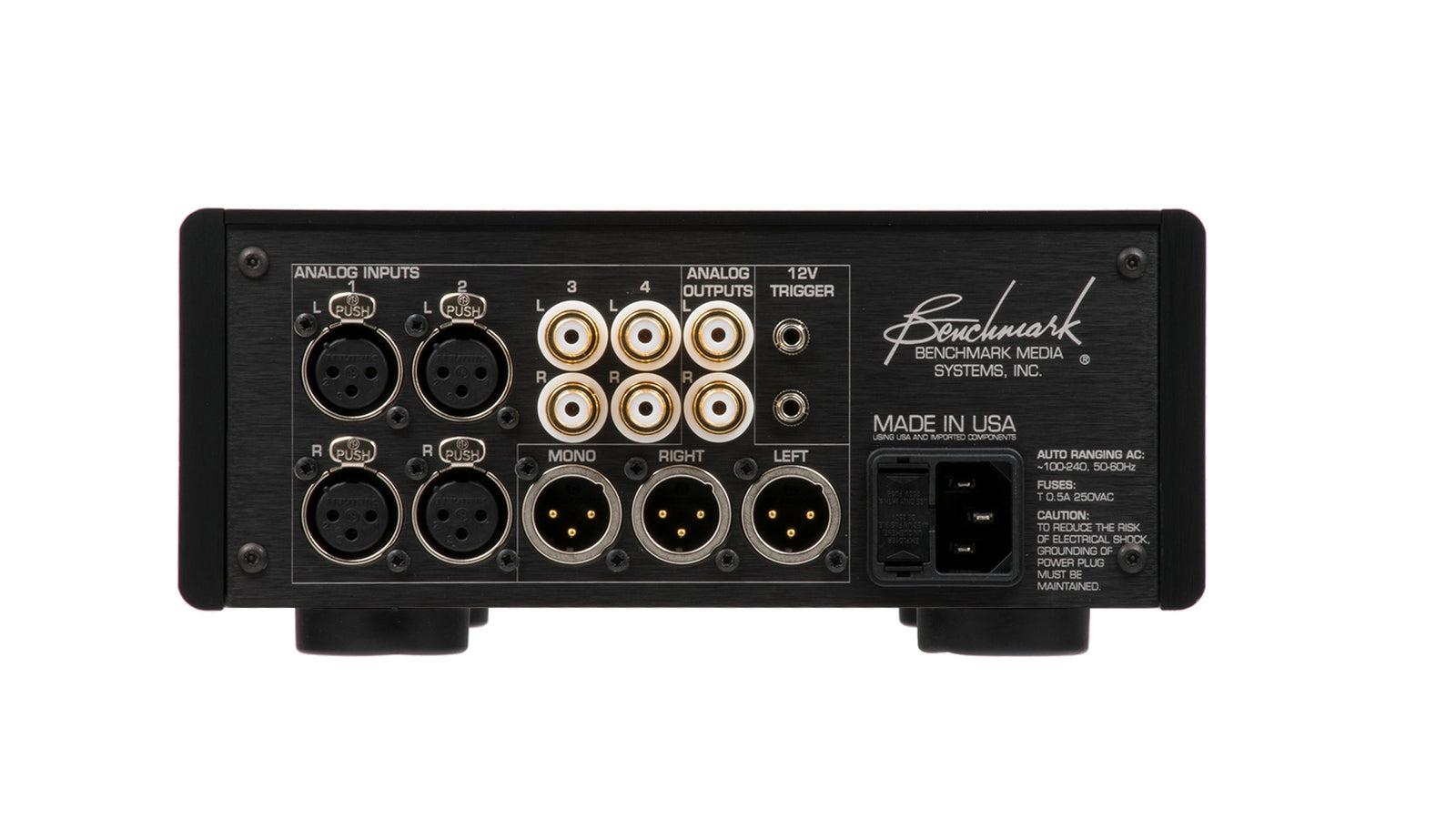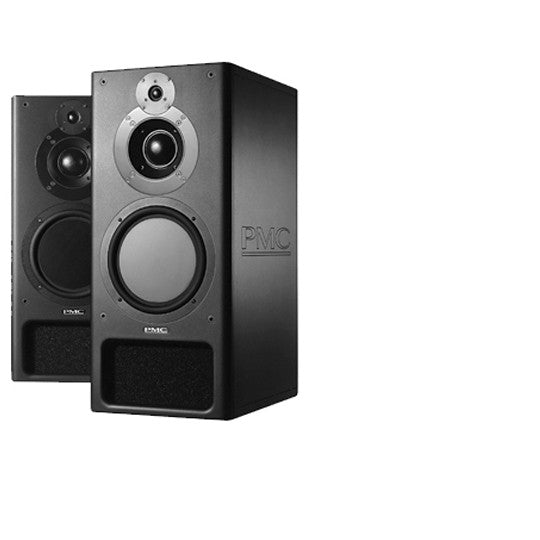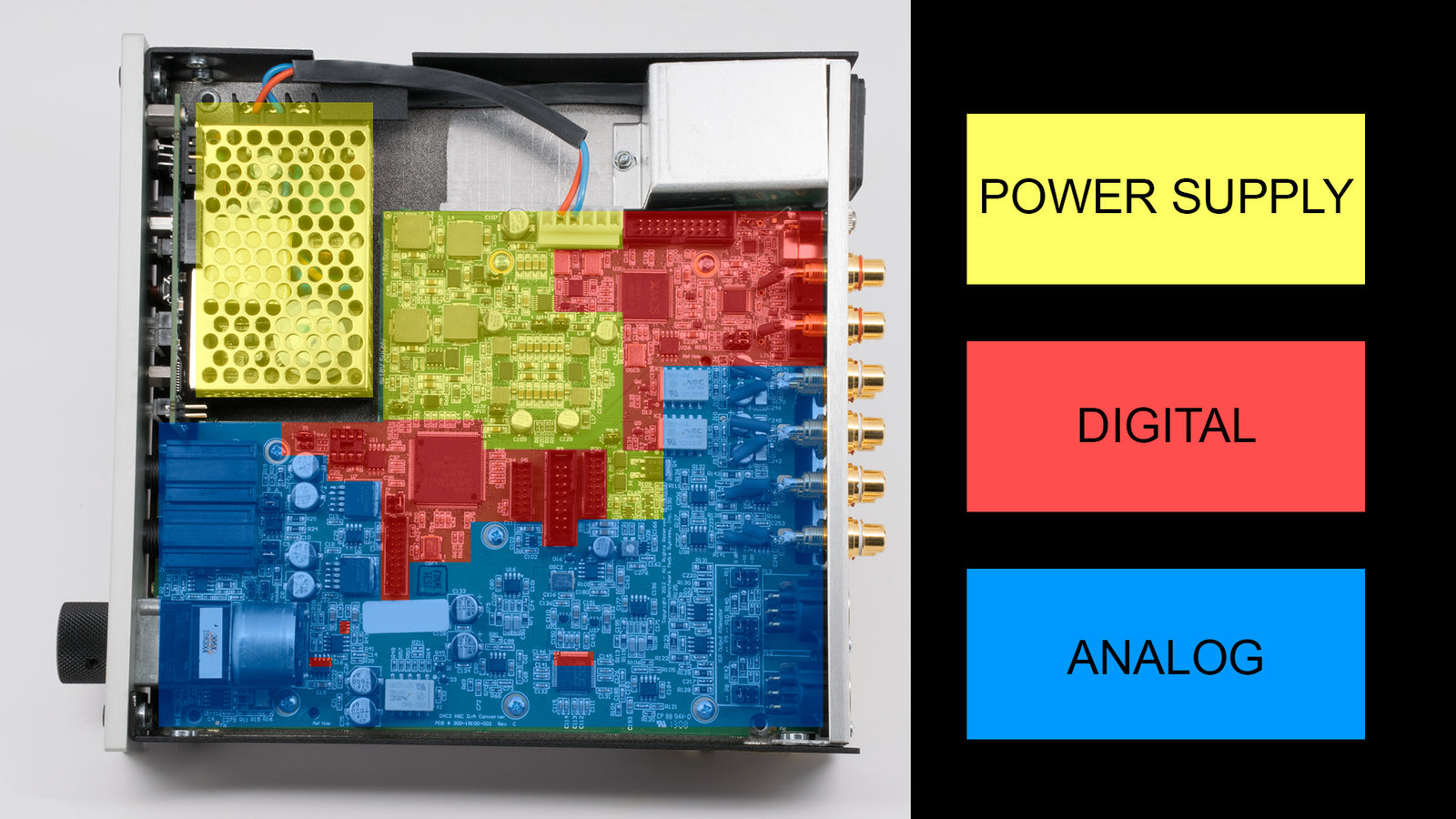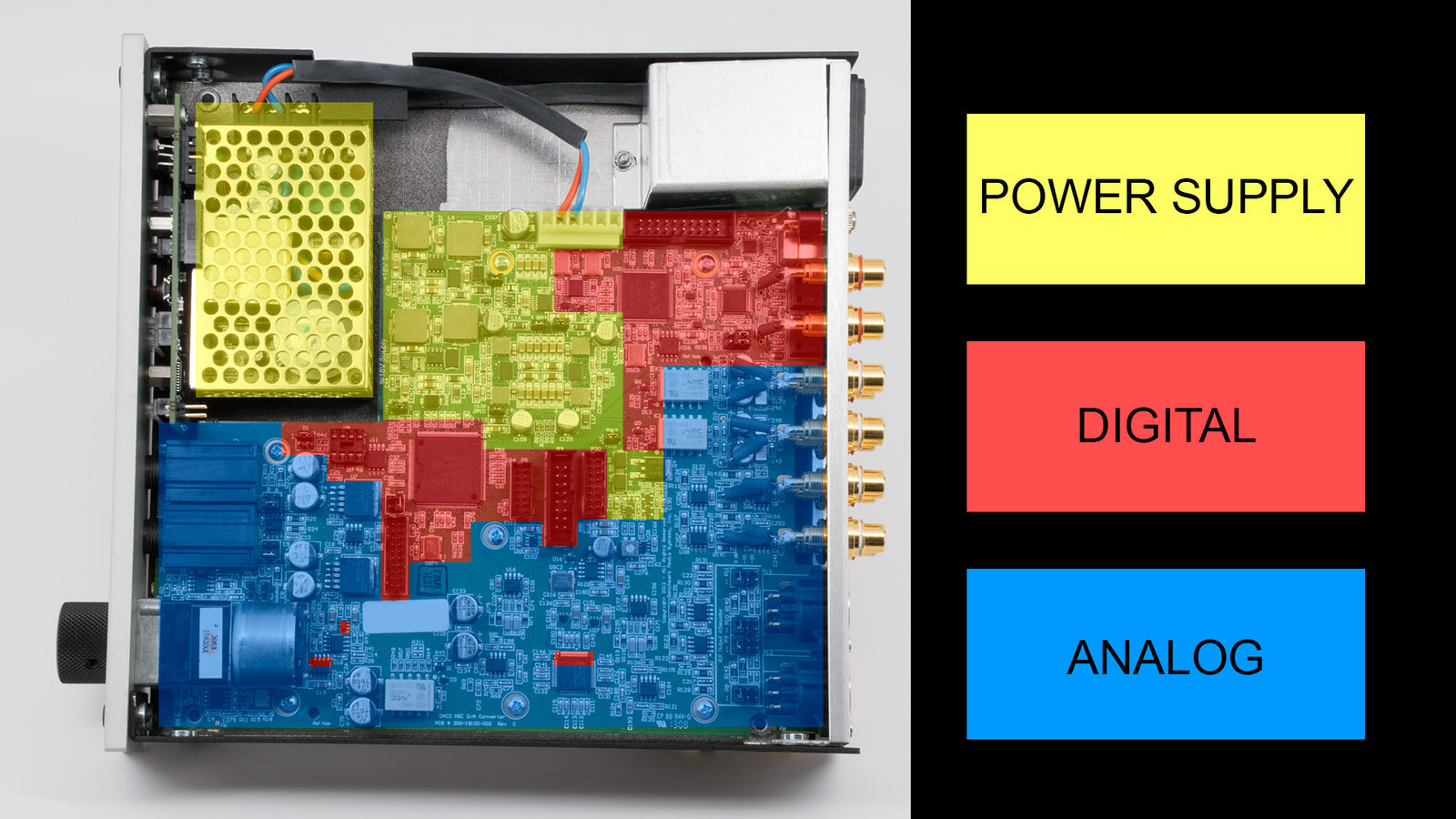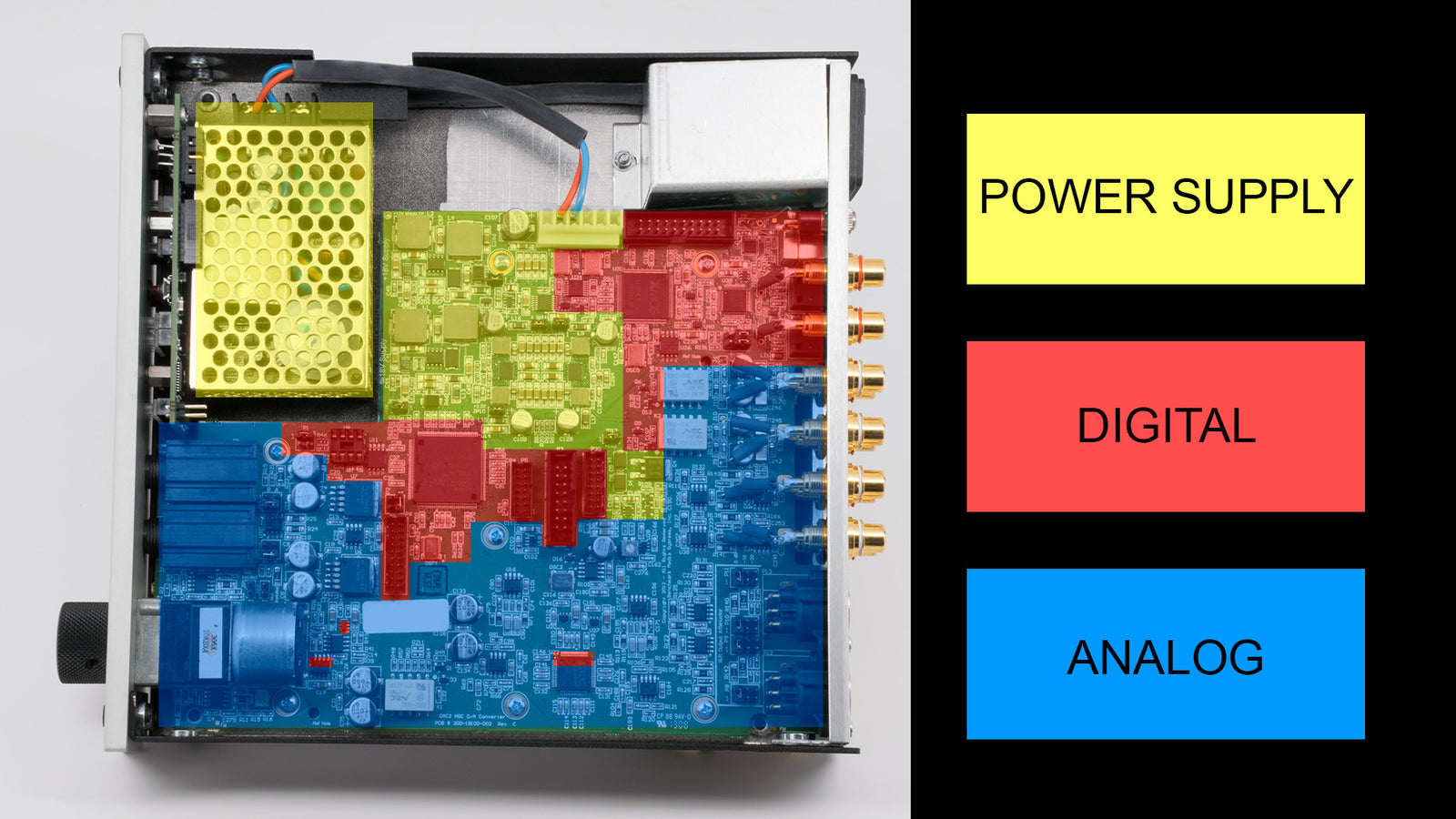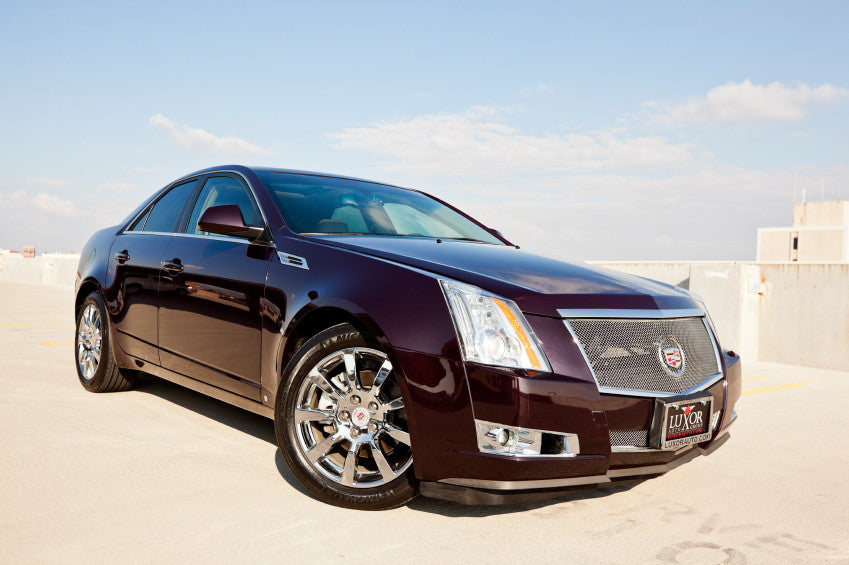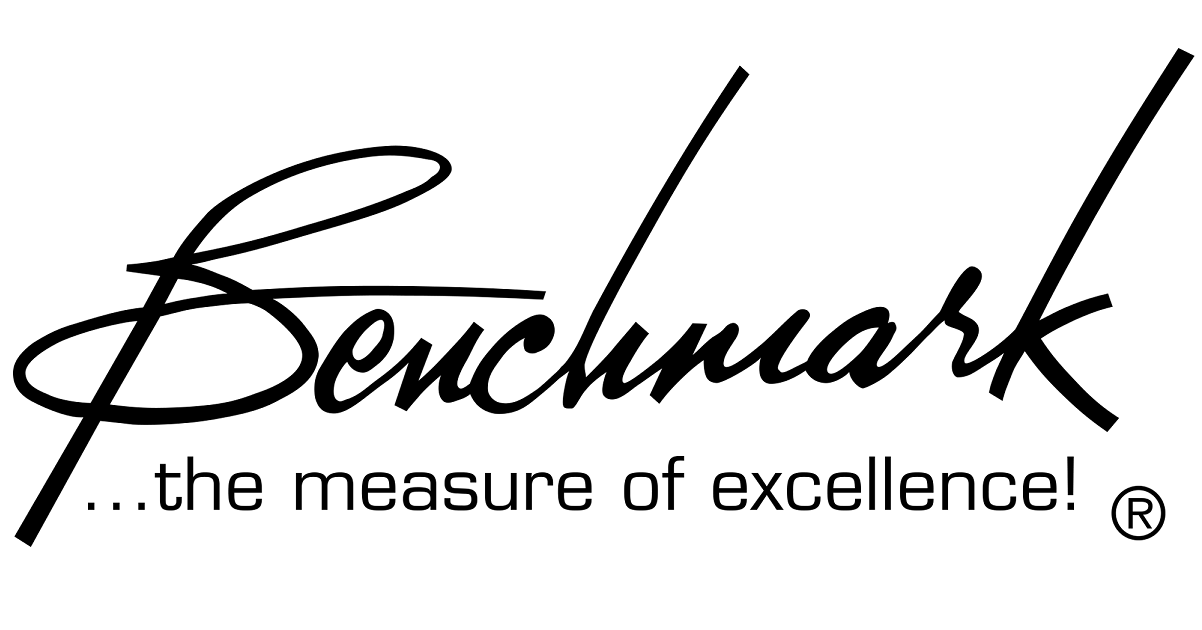Buy one component and save 10% on up to 2 cables. Buy 2 components and get 4 free cables. Free shipping on USA orders over $700.
Buy one component and save 10% on up to 2 cables. Buy 2 components and get 4 free cables. Free shipping on USA orders over $700.
Audio Application Notes
Balanced vs. Unbalanced Analog Interfaces
by John Siau April 23, 2018
If you look at the back of any Benchmark product, you will find balanced XLR analog-audio connectors. As a convenience, we also provide unbalanced RCA connectors on many of our products. In all cases, the balanced interfaces will provide better performance.
We build our unbalanced interfaces to the same high standards as our balanced interfaces, but the laws of physics dictate that the balanced interfaces will provide better noise performance.
This application note explains the advantages of balanced interfaces.
- John Siau
AHB2 Tri-Amp Setup - Ellery Coffman
by Benchmark Media Systems July 27, 2017
The following photos and system descriptions were provided to us by one of our customers, Ellery Coffman. He has put together an amazing system and has carefully treated his room with acoustic absorbers. Nicely done!
Hi Rory,
Thanks again for your help. For two speakers, it is truly unbelievable how real this tri-amp system sounds; it is nothing short of jaw dropping! It truly sounds better than the $200k+ setups I've heard in some of the high-end audio shops I've been to.
Post updated 10/8/2020
Intersample Overs in CD Recordings
by John Siau February 10, 2017
Intersample Overs are a Common Occurrence in CD Recordings
We have frequently used Steely Dan's Gaslighting Abbie from Two Against Nature in our listening tests. This is a spectacular CD recording with lots of dynamics and a low noise floor. Nevertheless, in a little over 5 minutes, this track has 559 intersample overs on the left track and 570 on the right track for a total of 1129. This means that there are about 3.7 intersample overs per second. The highest intersample over measures +0.8 dBFS. The track itself is not clipped, the 44.1 kHz sampling has simply captured peaks that exceed 0 dBFS. The following image shows the track with the intersample overs highlighted in red:
This track can be played cleanly by the Benchmark DAC2 and DAC3 converters. These converters accurately render the intersample peaks that were captured in the recording process. In contrast, conventional converters will clip each of the peaks highlighted in red. In this track the peaks coincide with hits to the snare drum. Converters that clip these peaks add a false brightness to the snare drum and alter its sound.
- John Siau
A Look Inside the New ES9028PRO Converter Chip and the New DAC3
by John Siau November 14, 2016
ES9028PRO D/A Converter Chip - Block Diagram and Test Report
This application note examines the differences between the ES9018 and the new ES9028PRO. It also compares the Benchmark DAC2 and DAC3 to demonstrate the performance improvements that can be achieved in a commercial product. It has been a little over 7 years since ESS Technology introduced the revolutionary ES9018 audio D/A converter chip. This converter delivered a major improvement in audio conversion and, for 7 years, it has held its position as the highest performing audio D/A converter chip. But a new D/A chip has now claimed this top position. Curiously the successor did not come from a competing company; it came from ESS. On October 19, 2016, ESS Technology announced the all-new ES9028PRO 32-bit audio D/A converter. In our opinion, ESS is now two steps ahead of the competition!
- John Siau
Calculating the Performance of an Amplifier-Speaker Combination
by John Siau November 01, 2016
Example 1 - PMC IB2S
In this application note we calculate the maximum output level and noise level produced by an amplifier/loudspeaker combination. Use this example for calculating the performance of your system.
At the 141st AES conference we demonstrated two Benchmark AHB2 monoblock power amplifiers driving a pair of 4-Ohm PMC IB2S studio monitors. These monitor are also available the PMC IB2SE hi-fi version.
In bridged mono, the AHB2 can deliver over 518 watts into each of these 4-Ohm speakers. This is a perfect match to PMC's 500 watt recommendation. The AHB2 easily provides the power, the output current, and the damping required by these low-impedance speakers.
"I am very impressed with the clarity and accuracy of these outstanding professional monitors. The Benchmark AHB2 and PMC IB2S are an absolutely killer combination!"
- John Siau, VP, Benchmark Media Systems, Inc.
Inside the DAC2 - Part 3 - Power Supplies
by John Siau July 13, 2016
The Benchmark DAC2 is an audio digital-to-analog converter. This application note explains the power supply configuration inside Benchmark's DAC2 D/A converter. In part 1 of this series we discussed the importance of the analog section of an audio converter. In part 2 we discussed the unique high-headroom digital processing chain inside the DAC2. The analog and digital systems each contribute toward Benchmark's overall goal of transparent musical reproduction, but this goal can only be reached when these systems are supported by a well-designed power supply system. In many cases, classic solutions (linear power supplies, line-frequency transformers, and large banks of capacitors) fail to deliver adequate performance. The DAC2 takes a radically different approach.
- John Siau
Inside the DAC2 - Part 2 - Digital Processing
by John Siau June 24, 2016
The Benchmark DAC2 is an audio digital-to-analog converter. This application note explains the proprietary digital processing inside Benchmark's DAC2 D/A converter. In part 1 of this series we made the case that 90% of the components in an audio converter are analog, and that about 90% of the "magic" happens in the analog processing. Nevertheless the 10% that is digital still makes an audible contribution to the sound of an audio D/A converter. This is especially true when the digital processing is complemented by a very pure and clean analog section. With a highly transparent analog section, some of the subtleties of the digital processing can become apparent.
Take a tour of the digital processing chain in the DAC2.
- John Siau
Inside the DAC2 - Part 1 - Analog Processing
by John Siau June 04, 2016
The DAC2 is an audio digital-to-analog converter. Most people focus on the word "digital" and assume that all of the "magic" happens in the digital processing, but nothing could be further from the truth! A look inside most audio converters would show that about 90% of the components are analog!
This application note takes a look at the analog processing in Benchmark's DAC2 D/A converter.
- John Siau
Benchmark Bi-Directional 12 Volt Trigger - Technical Details
by John Siau April 20, 2016
12 Volt Trigger
Link your audio products together with trigger cables


Benchmark has created a bi-directional 12 Volt trigger interface that is compatible with almost every trigger input and output. This interface can be used to connect Benchmark products together so that they will power up and down in a sequenced fashion. This same interface can be connected to the trigger inputs and outputs on other brands of audio products. This application note describes some typical configurations and it includes the full technical details of the Benchmark bi-directional trigger system.
- John Siau
How Should I Buy an Audio System?
by John Siau February 26, 2016
Two Distinct Types of Audio Products - Understand the Difference Before You Buy!

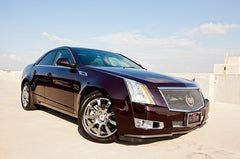
Make your own choice!
"Buying an audio product is much like buying a car"
There are two distinct types of audio products. Some audio products are designed to be transparent while others are designed to provide a euphonic experience. These types are as different as a Porsche and a Cadillac.
There is not a right and wrong type of car. Likewise there is not a right and wrong type of audio product. The choice belongs to the user, but the user must be fully aware of the differences before they buy.
- John Siau
Benchmark DAC2 vs. DAC1 - Side-by-Side Measurements
by John Siau August 13, 2015


There was a 10-year time span between the introduction of the Benchmark DAC1 and DAC2 audio D/A converters. The DAC1 defined the state of the art when it was introduced in 2002. Thirteen years later, Enjoy the Music.com selected the DAC1 as one of the 20 most significant digital audio products from the past 20 years. Today the DAC2 defines the state of the art in audio D/A conversion. John Atkinson said that the "DAC2 offered one of the highest resolutions I have measured." Both products set performance benchmarks when they were introduced. In a sense, they provide snapshots of technological progress.
This paper shows high-precision side-by-side measurements of the DAC1 and DAC2 converters. These measurements show how technology has improved, and they show that there may be two or three audible differences between these two products.
Travel through 10 years of audio technology, learn the significance of audio measurements, and see what has improved in our quest for transparent audio reproduction.
- John Siau
Benchmark DAC2 vs. DAC1 - Is There an Audible Difference?
by John Siau August 06, 2015
Benchmark introduced the DAC1 in 2002 and it quickly became the best-selling 2-channel professional D/A converter. To this day, the DAC1 is a standard fixture in many recording studios, and it is also a central component in many high-end hi-fi systems. In August of 2015, Enjoy the Music.com selected the DAC1 as one of the 20 most significant digital audio products from the past 20 years.
It is easy to show that the DAC2 measures better than the DAC1 in almost every way. From a marketing perspective it would be tempting to claim that all of these measured differences make audible improvements, but this just isn't the case.
One reviewer, Gary Galo, recently had the opportunity to hear a DAC1 and DAC2 side-by-side. He noted some audible differences and we agree with his conclusions. We have had a great deal of experience listening to these converters side-by-side in our own listening room and we are familiar with some subtle differences.
This paper examines the subtle audible differences between the DAC1 and the DAC2. It also includes measurements that may help to explain these differences.
- John Siau
Creating a High-Resolution 5.1 Music Server
by John Siau April 21, 2015
Blu-ray disks often contain high-resolution audio formats. Dolby TrueHD and DTS-HD are two Blu-ray audio encoding formats that support lossless high-resolution audio. These systems support up to 8 channels of 24-bit, 96kHz audio, or up to 6 channels of 24-bit 192 kHz audio.
Blu-ray disks may seem like an ideal solution for the distribution of high-resolution audio, but there are problems. It is not easy to gain access to the high-resolution audio stored on these disks.
Our solution was to set up a PC-based music (and video) server. We used a Blu-ray equipped PC running Windows 7 and the JRiver MediaCenter software.
This application note provides a guide for setting up a music server that can play the lossless high-resolution audio tracks found on DVD and Blu-ray disks.
- John Siau
High-Resolution Audio - Bit Depth
by John Siau February 24, 2015
Bit Depth

We now have 16-bit CDs and 24-bit high-resolution recordings available to us. What are the advantages of a 24-bit word length? Are 24-bit recordings better? How many bits do we really need?
Bit depth (also known as word length) indicates how many bits are used to represent each sample in a digital sampling system. Each sample is a snapshot of a signal or voltage at an instant in time. The CD uses 16 bits to represent the voltage of an audio waveform at each instant in time. Other digital audio systems use different bit depths ranging from 1 to 64 bits. It is important to understand the relationship between bit depth and audio quality. The bit depth sets ...
- John Siau


